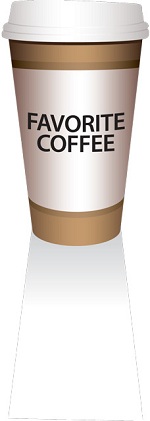What’s in a Name?

Most businesses try to choose a trademark (or brand name) that stands out and allows customers to differentiate their services and products from those of their competitors. As you develop your company’s trademarks, you should plan ahead and select a trademark keeping in mind trademark law and processes. The basic idea behind trademark law is to prevent confusion in the marketplace and to prevent a third party from using a trademark that a company has used first. So, before spending time and resources on building a brand, you should make sure the name and design you have picked are available and then take actions to protect the marks from being copied.
Background: Trademarks are those things that can identify and distinguish products and services. For example, words (OREO, INTEL, BARNES & THORNBURG), designs-logos-symbols ((,) slogans and tag lines (THE ULTIMATE DRIVING MACHINE), colors (pink for Fiberglas insulation), sounds (the Intel bongs), and packaging (also called trade dress) (the blue peaked roof of the International House of Pancakes). Trademarks identify products; service marks identify services. There is no legal difference between the two.
Creating a Trademark: In the United States, companies build up trademarks by using the mark “in connection” with the products or services, i.e. on the product or packaging or package inserts, on brochures or Web sites. Using the mark in commerce first gives you “common law” rights in the mark for those products or services in the geographic area in which they are used. In other countries rights can be established by registering the mark first. In order to have the exclusive right to use the mark nationwide, you have to register it. Using the ™ symbol next to the mark can help establish common law rights (the ® can only be used after a U.S. registration has been approved).
“Strength” of Trademarks: The strength of a trademark is in whether it distinguishes your products or services over those of others. Strong marks have a greater chance of protection than weak marks. Some trademarks cannot be protected. For example, “candy” for candy. Fanciful or Coined trademarks (e.g. Kodak), which are marks that have no meaning, are the strongest.
Search for Availability: While not required, it is always good to do a thorough search about a trademark before applying for registration and before spending a lot of time and resources on building the trademark. Searches for registered marks can be done quickly online. A full search should be done to more thoroughly investigate other marks that may be in use but not registered.
Application and Filing: It is recommended that trademark applications be filed electronically. The government filing fee is currently $325 per “class” of products or services in which the application is filed. If you want to register the mark in more than one category of products, such as software programs and software consulting, there will be an additional filing fee for each additional class of products or services.
Examination, Publication and Registration: The Trademark Office will send an examination report approximately three to five months after filing, which typically approves the application or substantively rejects it. If approved, the application is published in the Official Gazette, where the public can object or oppose the registration. If there is no opposition, then the certificate of registration will be granted approximately two months later. The Trademark Office can also have minor objections. These can be resolved by revising the language, adding a disclaimer or submitting additional materials. Registrations are valid for ten years and may be renewed for additional ten-year periods. Between the fifth and sixth year after registration the owner of the mark must file an affidavit verifying that the mark is still in use. Failure to file the affidavit or to renew the registration will result in abandonment of the registration.
Protecting Your trademark After Registration: Once registered, the owner of a trademark should display the Registered trademark symbol (®) every time the mark is used. Trademarks must also be continuously used. Owners of marks should also monitor the marketplace to make sure their mark is not being used by a newcomer or a copycat. If use by another party is discovered, you must proceed quickly to stop it.
Foreign Protection: If you are anticipating that your business will be global, you must think about protecting your trademark in the countries where you plan to do business. If filings in other countries are filed within six months after filing the U.S. application, the foreign applications will be considered to have been filed with the same date as the U.S. application.
A trademark is a vital asset that will distinguish your business from that of other competitors and help your product or service stand out in the market. Make sure you take steps to protect the marks that you have developed and the goodwill that goes with them.
The author is a counsel member of Barnes & Thornburg LLP in the firm’s Atlanta office, where he is a member of the Intellectual Property Department. Mr. Acharya’s practice is focused on securing patent, copyright, and trademark rights and counseling with respect to those rights.
Enjoyed reading Khabar magazine? Subscribe to Khabar and get a full digital copy of this Indian-American community magazine.
blog comments powered by Disqus










